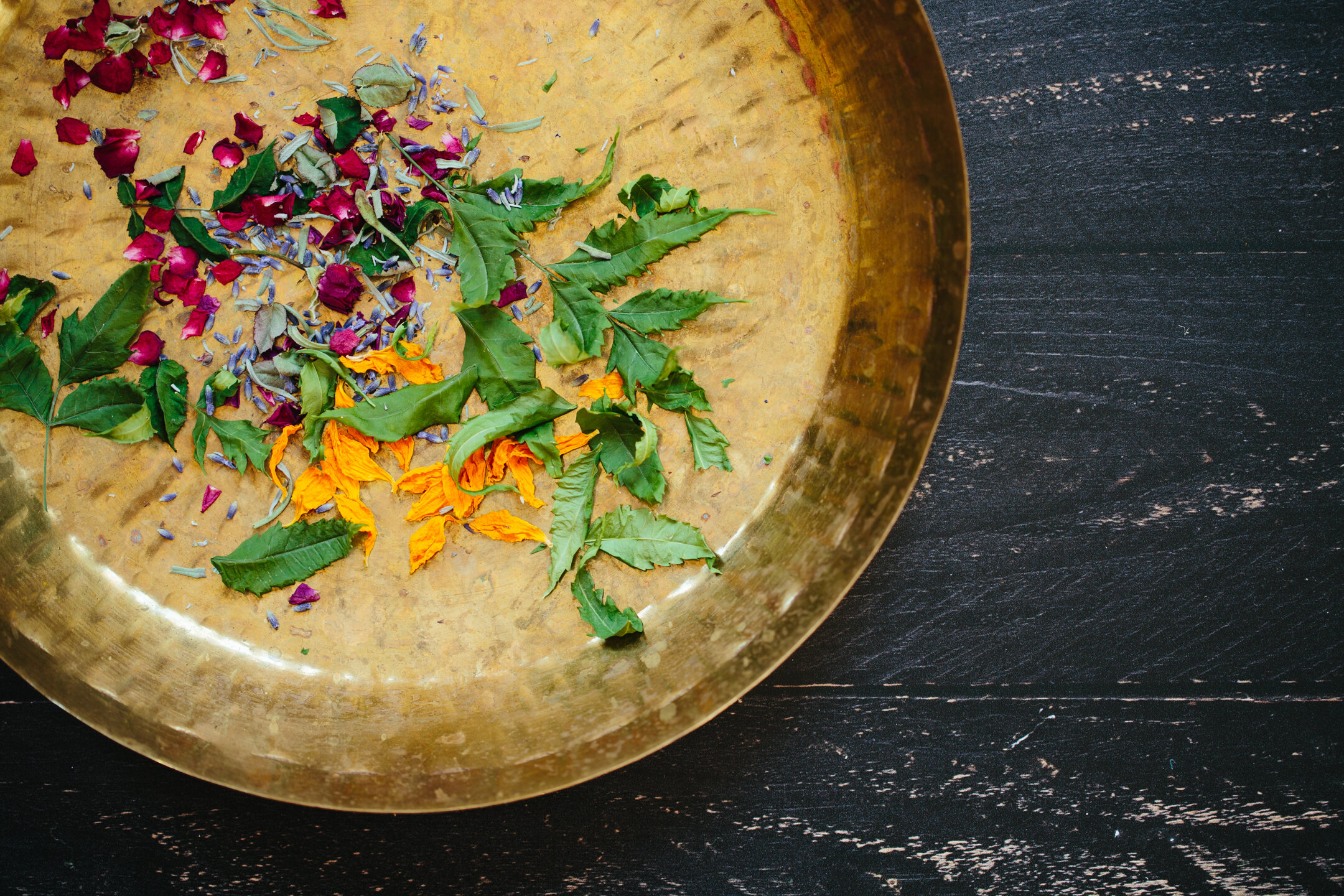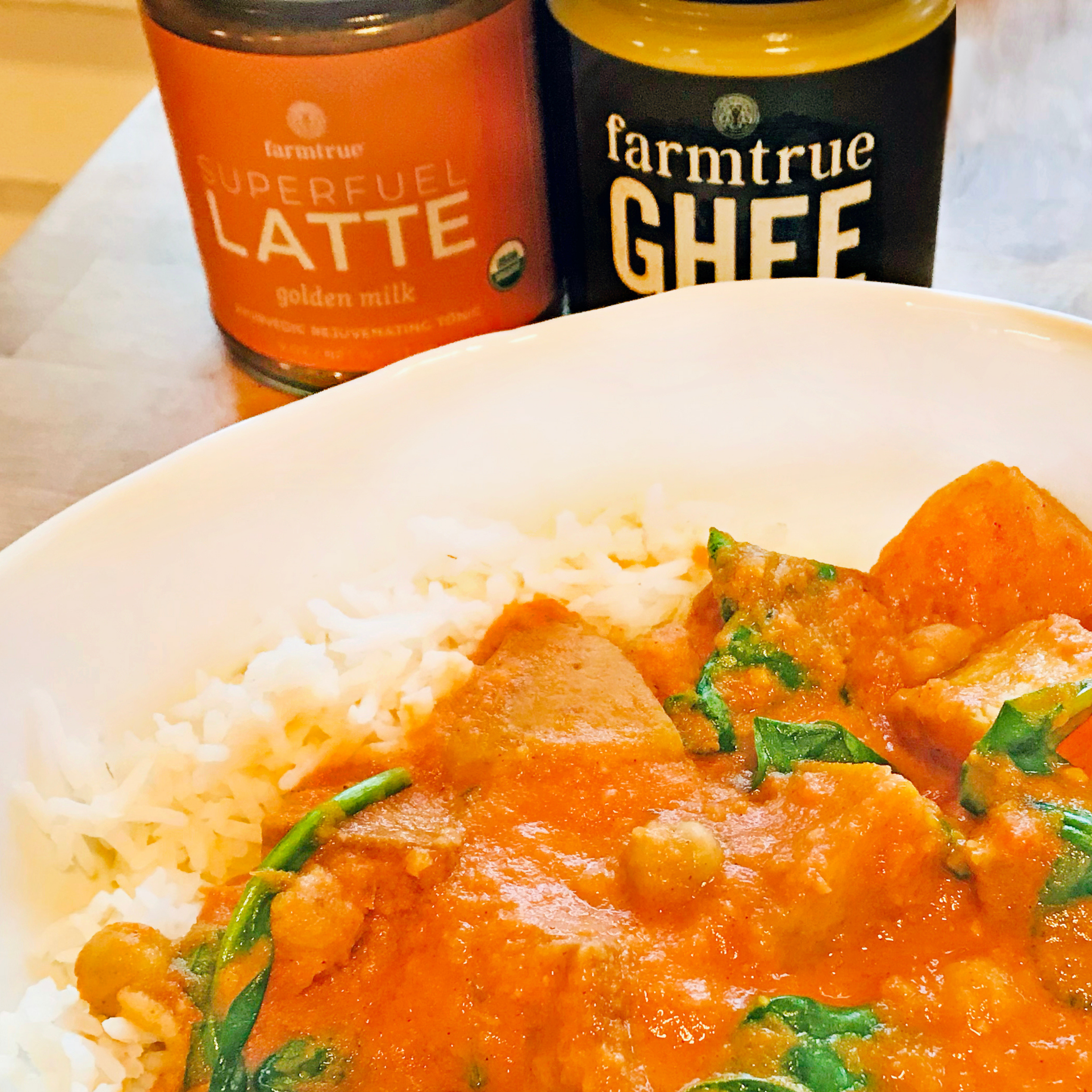
THE SEASONAL BLOG
The Seasonal blog is a collection of articles and musings from Ayurvedic Practitioner, Kate O’Donnell.
Here you’ll find a sanctuary of Ayurvedic recipes, lifestyle insights, and self-care rituals designed to nurture your entire being.
Happy reading!
GARLIC!
I don’t eat much garlic. I find it too stimulating. When I taught yoga full-time I did not like going in there smelling like garlic, and once I stopped using it, I found it way too strong to even be around!
However, our dear friend Garlic offers five out of the six tastes, which makes it a powerful medicine for a variety of ailments. It is intensely heating, which kills germs, and is a good choice for deep winter- but not all year long.
Here is Ayurveda’s classification of garlic, from my “Everyday Ayurveda Guide to Self-Care's medicinal foods directory.”
Botanical name: Allium sativum
Parts used: bulb, scapes
Rasa: sweet, salty, pungent, bitter, astringent
Virya: heating
Vipaka: pungent
Qualities: oily, heavy
Actions: aphrodisiac, increases circulation, relieves earache and other pains, antibacterial, lowers cholesterol
Contraindications: too much garlic can increase pitta, rajas, and acidity, and make you smelly.
How often do you use garlic??? What do you use it for?
REJUVENATING TONIC RECIPE!
If you saw my last post about winter foods, you may be thinking about the dry quality. Here’s a home remedy for you!
This recipe is for a very common constipation home remedy. Three things: milk, ghee, and warming spices to help break it down.
If you have dry poops, this is likely to cause a change you will notice within a week or so. For best results, take this drink in the evening close to bedtime, as opposed to around other foods. Taking it by itself will optimize digestion and absorption.
1 cup milk of choice (cow, almond, coconut)
1 tsp ghee
pinch of digestive spice: ginger, cinnamon, nutmeg, pepper, cumin- any or a combo!
Preparation:
In a small saucepan on medium heat, warm the ingredients to steaming.
Whisk to a uniform consistency with a fork or a milk frother.
Drink immediately. Be sure to sit down and relax while enjoying.
*please keep in mind that long-term constipation can have diverse causes and may be best served by consulting an Ayurveda practitioner.
Photo @carabros
Winter is described as that time when the earth is tilting away from the sun, making the environment more cold and dark.
Without the drying heat of bright sun winter starts out with more moisture. Something else to consider these days, however, is the climate indoors. If a place is cold enough to require heaters inside, this heat is going to dry the air. If a lot of time is spent indoors in winter, dryness will result, especially in the respiratory channels.
If you don’t get enough good fats in winter time, you may begin to notice dry stool or dry skin.
What's the deal with BEANS?
The name of the game in Ayurveda is small beans in winter. Little guys such as mung and lentil, are easier to digest during the Vata season. They soften and moisten quickly and more completely through the cooking process.
Large beans, such as garbanzo and kidney, eaten in excess, can fill the digestive tract with air, which is very aggravating and irritating to the body, and also the mind (being gassy is a little...distracting, no?).
Some bodies can eat beans no problem (like your Pitta and Kapha types!), others will have to moderate even small beans. Always soak them over night, and cook them well with some spices and fat to balance their light, dry qualities.
This is why you find so many dal recipes in my cookbooks. Head over to my IGTV to find a video of me making a super quick dal soup.
The Skinny on Salt
In the world of condiments, salt is an important player. Salty taste heats the body due to the presence of fire element in its composition, important in cold weather.
Salt’s hydrating effect also calms the nervous system by softening and relaxing the body. Not all salt is created equal, however. Table salt is demineralized, removing its therapeutic effects. Sea salt has large molecules that are hard to digest, while pink salt has smaller molecules and bio-available minerals.
Ayurveda has long favored pink salt, and it's all I use in my cooking. Its modern trade name is Himalayan Pink Salt and it's easy to find. Enjoy it!
What’s the deal with a winter detox?
So, we know about Ayurveda and cleansing at the juncture of seasons. Why in mid-winter???
I find climate to be an environmental factor as well as a cultural factor. Culturally, many have undergone a few weeks of holiday enjoying of heavy foods, combining foods in complicated ways, and lots of sweets! While we have discussed in this space tricks for maintaining moderation, this time can mark a beginning of ama. The program I’ve developed for the New Year’s Detox is shorter and more targeted than my seasonal cleansing programs. It is about processing holiday ama- before it gets a foothold.
My favorite: White Christmas (as mentioned in The Everyday Ayurveda Cookbook, where Bing says “grab the cow”). Yours?
HOLIDAY RECIPE ALERT. These Spiced Date-Nut Balls are a fun cookie alternative.
No sugar, no flour, digestive spices and healthful seeds. You can actually build a snowman out of this dough. ☃️
1/ 3 cup almonds
1/ 3 cup walnuts
1/ 3 pumpkin or sunflower seeds
10 dates, pitted (sub in some dried cranberries and apricots to feel festive!)
1/ 4 tsp cardamom, cinnamon
Few drops of orange oil, or 1/ 4 tsp orange zest
Food process to a paste. Fridge it one hour. Form into bite size balls and display on a tray. You can roll these in coconut, hemp seed, or cocoa powder. Get the kids involved, making balls, logs, snowmen- you can roll it out on wax paper and use small cookie cutters as well, pressing any of the above into the tops.
These tips are hard won!
I have long been a lover of celebration and have experimented and over-indulged enough to know when to draw the line! These tips are my non-negotiables for digesting big meals.
New recipe developed for Farmtrue ghee!
Check out my Butternut Tikka Masala recipe! This is different from my usual recipe, it’s a holiday special. Requires a little more effort, contains onion and lots of tomato, and has a real North Indian flavor. I think you will not regret taking the time to roast some butternut and combine it with homemade Tikka Masala and Farmtrue’s versatile Superfuel Latte mix!
Superfuel Butternut Tikka Masala
Prep time: 30 minutes
Cooking Time: 25 roasting, 25 stovetop
Total Time: [1] 1 hour 20 min
Serves: 6 servings
With chunks of butternut squash and creamy coconut milk, this Superfuel Butternut Tikka Masala showcases Ayurveda’s building tastes: sweet, sour, and salty. The big news about this wintery tomato-based stew is the secret ingredient. Farmtrue’s Superfuel Latte Mix loads this dish with medicinal herbs and spices, making it not only satisfying and delicious but rejuvenating as well.
For roasting the Squash:
4 cups butternut squash, peeled and cut into 1“ cubes (about one small/medium squash)
2 tbsp Farmtrue traditional ghee, melted
1 1/2 tsp garam masala spice
1/2 tsp Himalayan pink salt
Butternut Tikka Masala Ingredients:
1/4 peeled and chopped ginger root
1 serrano chili, halved and seeded
2 tbsp tomato paste
2 tbsp Farmtrue Superfuel Latte Mix
2 tbsp Farmtrue Traditional Ghee
1 medium onion, chopped
8 roma tomatoes, coarsely chopped
1 1/2 tsp Himalayan pink salt
3/4 c canned coconut milk
1 can chickpeas, drained and rinsed well
3 large handfuls of baby spinach
To roast the squash:
Preheat the oven to 400.
Toss the squash with melted ghee, spices, and salt.
Transfer onto a baking sheet lined with parchment paper and roast for 25 minutes, until tender.
Broil for 2-3 minutes to brown the squash cubes.
To prepare the Tikka Masala:
Use a small food processor to combine the ginger, chili, Superfuel Latte Mix, and tomato paste to make the masala paste—process to a paste. If your processor is too big for the job, dice everything up small and stir to combine. The sauce will be blended later.
In a heavy-bottomed soup pot or Dutch oven, warm the ghee over medium-high heat.
Saute the onion for 2-3 minutes until it begins to brown.
Turn heat down to medium, add the Tikka Masala and saute, mixing well, until the spice mixture begins to brown, about 2 minutes.
Add the tomatoes and salt. Bring to a simmer for 20 minutes on medium-low heat.
Using an immersion blender, puree the sauce until smooth.
Stir in the chickpeas, spinach, and coconut milk.
Gently stir in the squash cubes.
Return to a simmer for 5 minutes.
Serve over basmati rice or with Farmtrue Stove-Top Naan Bread.
At Farmtrue, everything we do stays true to our unwavering commitment to being more connected – to ourselves, each other, and the land. Co-founders Lynn Goodwin and Kim Welch are working to modernize Ayurvedic self-care for optimal sleep, digestion, and energy: the three governing pillars of health. They produce the most honest and simple products to help honor the true you by thinking seasonally and living mindfully. It’s a sincere conviction rooted in sustainability and the ancient philosophy of Ayurveda that inspires them to eat, live, and act with more care.
Visit their website at Farmtrue.com and @Farmtrue.









